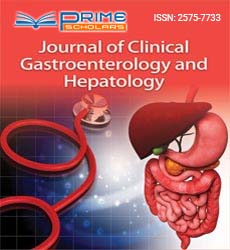Commentary - (2023) Volume 7, Issue 2
Gastrointestinal Issue is a Secondary Effect brought by Anatomic or Biochemical Irregularities
Flavia Magri*
Department of Gynaecological Endocrinology, University of Heidelberg, Germany
*Correspondence:
Flavia Magri,
Department of Gynaecological Endocrinology, University of Heidelberg,
Germany,
Email:
Received: 29-Mar-2023, Manuscript No. IPJCGH-23-16559;
Editor assigned: 31-Mar-2023, Pre QC No. IPJCGH-23-16559 (PQ);
Reviewed: 14-Apr-2023, QC No. IPJCGH-23-16559;
Revised: 19-Apr-2023, Manuscript No. IPJCGH-23-16559 (R);
Published:
26-Apr-2023, DOI: 10.36648/2575-7733.7.2.16
Description
Grown-ups, teenagers, and kids all experience a high predominance of practical gastrointestinal issues (FGIDs). Issues of the stomach cerebrum connection are one more name for them. Sensitivity and a variety of symptoms in the gastrointestinal (GI) tract are caused by FGIDs, which are not caused by an infection or disease but rather by atypical functionality. The most common FGID symptom in children is functional abdominal pain. That is, torment that isn’t brought about by a sickness but instead by an uncommon GI capability. They influence your quality of life and select an individualized treatment plan. FGIDs diagnosis is more challenging than that of other conditions. Regardless of whether you experience side effects, imaging and research center tests may not reveal anything particularly strange about your gastrointestinal plot. Medicines are customized to every person. There are many different kinds of FGIDs. You may respond differently to medications than someone else with your condition. Treatment decisions consolidate lifestyle changes, mental flourishing the leaders, and prescriptions. FGIDs are common and can make it difficult to carry out routine activities. They affect a lot of people and include a variety of situations, from irritable bowel syndrome and utilitarian diarrhea to obstruction and regurgitation. One in every four adults suffers from a condition known as grown-up useful gastrointestinal issues (FGIDs), which has a negative impact on personal satisfaction, work efficiency, and healthcare costs. Fermentable oligosaccharides, disaccharides, polyols, and gluten (FODMAPs) have recently gained attention as a potential dietary cause of IBS symptoms. Stone fruits, legumes, lactose-containing foods, and artificial sweeteners are all sources of short-chain carbohydrates that are known as FODMAPs. Feelings of prolonged indigestion with no apparent structural cause are characteristic of a chronic digestive condition known as functional dyspepsia (FD). However, a number of non-structural factors, such as bacteria, diet, and a few medications, can result in FD. Acid reflux is alluded to medicinally as dyspepsia. Medical care experts will allude to your condition as practical in the event that you have no primary anomalies in the upper gastrointestinal system yet at the same time experience constant acid reflux side effects. Side effects in the center or lower gastrointestinal parcels that are not brought about by anatomic or biochemical deformities comprise a useful gastrointestinal problem. Among the signs are abdominal pain, early satiety, nausea, bloating, distention, and a variety of disordered defecation symptoms. Peevish inside condition (IBS), useful dyspepsia, and stoppage are the three most normal practical gut issues. This does not rule out the possibility of treating FGDs, even though there are no obvious signs of disease or structural issues to blame for their symptoms. Working with your medical provider on a functioning therapy plan will be essential if you have a suspicion of or have been diagnosed with a FGD. Functional dyspepsia, IBS, abdominal migraine, childhood functional abdominal pain, and childhood functional abdominal pain syndrome are all functional GI disorders associated with abdominal pain. Blockage and Incontinence incorporate utilitarian stoppage and nonretentive waste incontinence. The adolescent rumination syndrome, cyclic vomiting syndrome, and aerophobia are all forms of vomiting and aerophobia. Proctalgia fugax, Levator any condition, and undefined utilitarian anorectal agony are a wide range of useful anorectal torment.
Acknowledgement
None.
Conflict Of Interest
The authors declare that they have no conflict of interest.
Citation: Magri F (2023) Gastrointestinal Issue is a Secondary Effect brought by Anatomic or Biochemical Irregularities. J Clin Gastroenterol Hepatol. 7:16
Copyright: ©2023; Magri F. This is an open-access article distributed under the terms of the Creative Commons Attribution License, which permits unrestricted use, distribution, and reproduction in any medium, provided the original author and source are credited.

